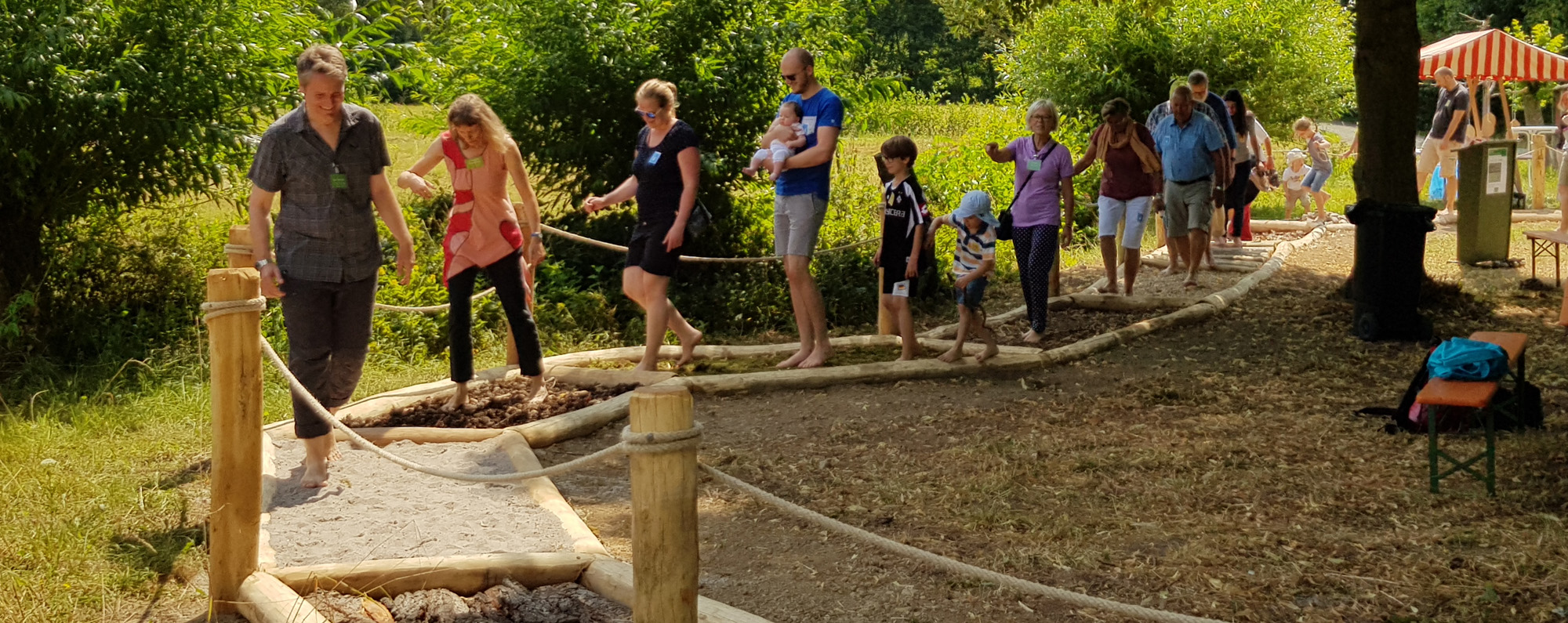Sensory Trail

Since summer 2018, the Hessenpark Open Air museum has been home to the ‘Sensory Trail’. It expands the Hartig Forest Trail and invites all visitors to the museum to experience nature with their feet. The trail is specially designed to evoke how we touch and sense with our feet – namely what controls our movement and allows us to feel warmth, cold, pain and pressure.
With around 75,000 nerve endings, our feet are a highly developed organ of touch, responsible for controlling movement and sensing external factors. They are adaptable and elastic and have a thick layer of fat on the bottom for cushioning. The musculoskeletal system comprises of 38 bones and 33 joints, and a whole host of muscles, tendons, ligaments and connective tissues give elastic support to the bones making up the arch of the foot. Shoes limit the mobility and perception of our feet, whereas walking barefoot improves coordination and our sense of balance.
The idea of a field you experience with your feet dates back to the carpenter, artist and educator Hugo Kükelhaus (1900-1984). He believed that people in modern, industrialised society are losing their capacity for sensory experience and development. In 1975, he introduced a sensory field with stations for experimenting and playing in order to develop the senses. In doing so, he became a pioneer of modern experiential education. Nowadays, people rarely spend much time out in the fields, forests or meadows, and so the sensory field serves to stimulate direct experiences in a way that visitors are consciously aware of, as well as to promote mindfulness and strengthen our resources.
At the Open Air Museum, the Sensory Trail consists of 13 fields with different surfaces, such as moss, forest floor, sand, cones, pebbles or bark. These are designed to introduce visitors to the diversity of human perception, stimulate the sense of touch in the feet and improve balance and coordination skills.

Mit dem Laden der Karte akzeptieren Sie die Datenschutzerklärung von Google.
Mehr erfahren




